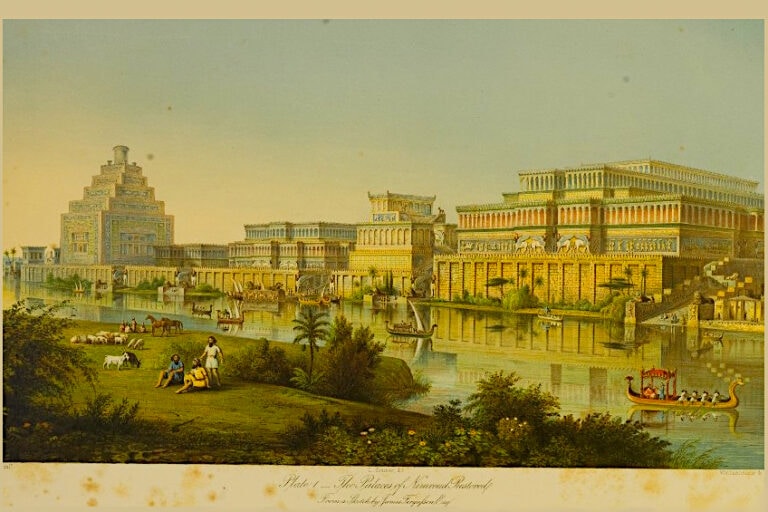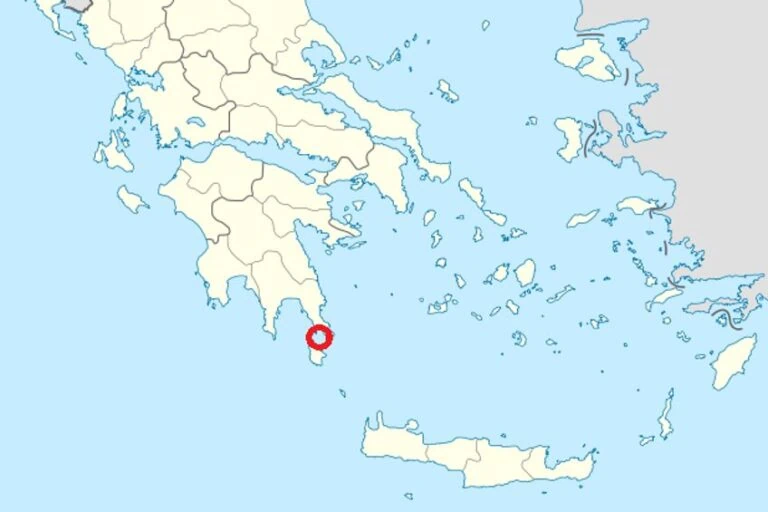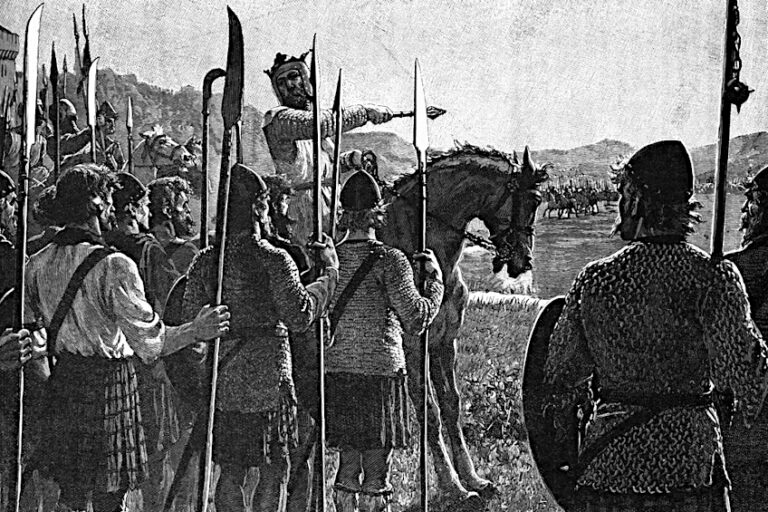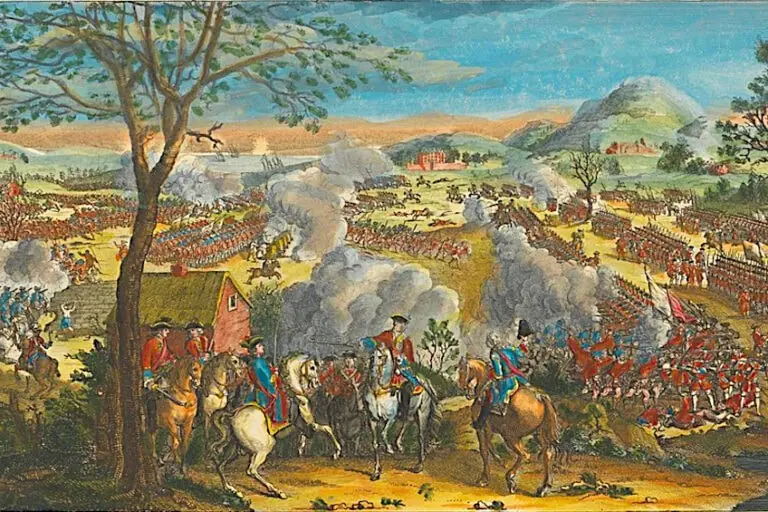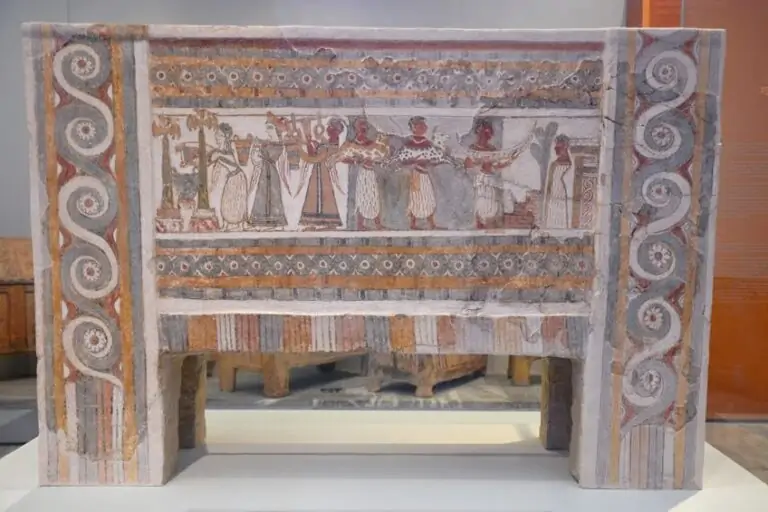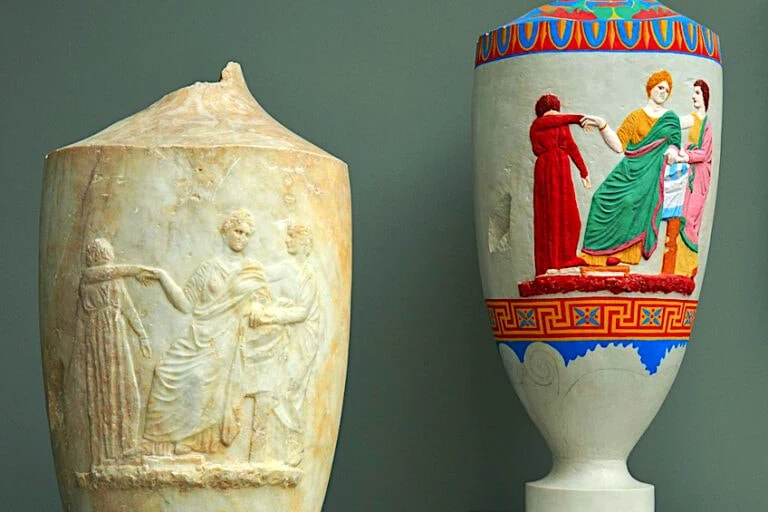Castle Architecture – The History of Different Types of Castles
While castles are a big part of middle age fantasy media, they are actually a significant part of human history as well. Castles have provided people with a secure place to rest and regroup during times of war, providing cover to soldiers and civilians alike. Castles exist all over the world, serving as strongholds during times of war, and homes for royalty and other forms of leadership during peacetime. Have you ever wondered how a castle is constructed and why it is done this way? If you have, we’ll be exploring castle architecture, castle structure, and the various functions of each section of a castle below.
Contents
What Is Castle Architecture?
What is castle architecture and why is it important? Well, a castle structure usually had an intended purpose, which in most instances served as the home to noble figures. This is prevalent throughout the Western and Eastern worlds, but they weren’t always used as lavish homes for the noble and upper class alike. The primary function of any castle or fort back in the day was to provide a fortified defensible position for those inside while keeping the enemy /invading force outside.
Castles, their walls, and towers were designed to provide the maximum amount of concealment for those inside while still providing them with a line of sight with which to engage the enemy.
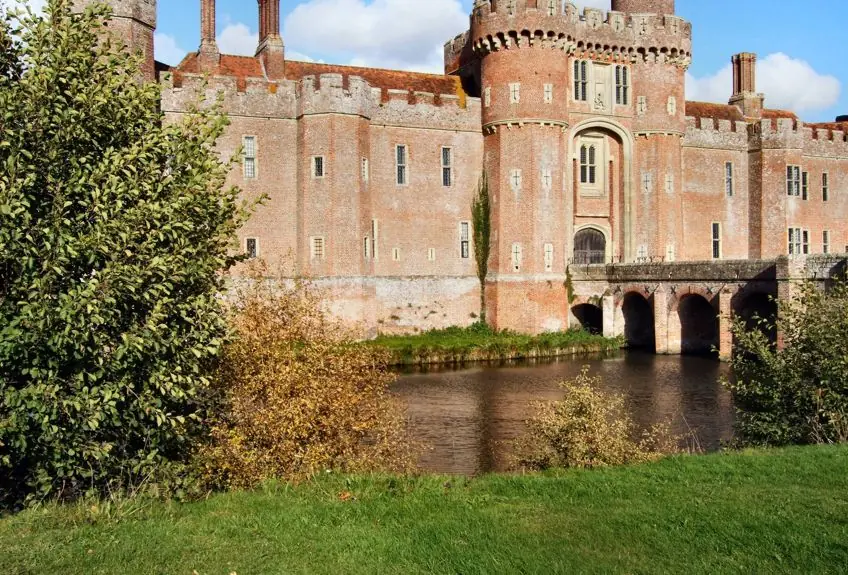 Bridge over Herstmonceux Castle Moat (1441); Bridge over Herstmonceux Castle Moat by Paul Gillett, CC BY-SA 2.0, via Wikimedia Commons
Bridge over Herstmonceux Castle Moat (1441); Bridge over Herstmonceux Castle Moat by Paul Gillett, CC BY-SA 2.0, via Wikimedia Commons
Castles in Europe, Asia, and the Middle East all developed over time. Walls became high, moats and trenches were added, and tall towers were added when the crossbow/bow and arrow became popular. Trap holes filled with spikes would be added to the exterior of the castle to stop the enemy from reaching the walls, and stone encampments would be added around the perimeter to broaden the presence of a defensive force. As castles evolved it wasn’t just offensive measures that developed along with them though. Strategic retreat points and secret passages were added to allow occupants to escape and/or flank the enemy if need be.
Castle architecture is largely strategic in its design, with distances, materials, entrances, exits, weak points, and blind spots all meticulously planned and compensated for.
How Have Castles Evolved over the Years?
The castle structure that you know today is a far cry from the structures that once existed when castles and forts first got their start. While a single stronghold surrounded by a wall used to be sufficient to defend against invading forces, as warfare, tactics, and weaponry developed, so did the overall architecture of the castle.
The 9th century saw castles develop rapidly in response to ranged weaponry and more strategic sieges. Advancements included encircling walls that allowed for a layered defense and overlapping fire from archers, reinforced walls at certain sections of the castle that would likely come under heavy fire, and eventually moats that deterred entry to the main grounds.
Other additions include fortified and controlled entry and exit ways in the form of a barbican, which is essentially a walled archway that acts as a checkpoint and/or framework for a drawbridge. This would have been used in conjunction with vertically closing gates known as portcullises while being overlooked by machicolations. Designs of the aforementioned defensive measures tended to vary according to the style and needs of the castle structure, but there are some commonalities. The portcullises were usually wooden and slid between a rock recess on either side of the archway. They were usually reinforced with some sort of metal too, but not always. As for the machicolations, there was either protrusion from the upper walls or holes in the overhanging ceiling of the exterior walls that allowed for ranged weapon fire.
What Were Early Castles Like?
There are many types of castles all around the world, all of which have unique characteristics. It would take an awfully long time to cover all of them, so for the sake of simplicity, we’re going to have a look at some of the British and European castle designs that were popularized throughout the years and how they evolved over time.
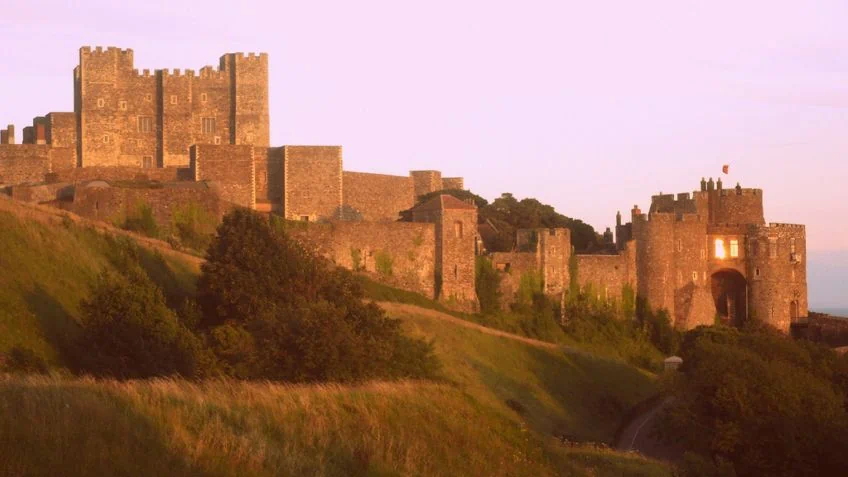 Dover Castle (12th Century); Webzooloo from France, CC BY 2.0, via Wikimedia Commons
Dover Castle (12th Century); Webzooloo from France, CC BY 2.0, via Wikimedia Commons
The Motte and Bailey (Middle to 9th Century)
The Motte and Bailey castles designs are simple and effective. This is why it comes as no surprise that they became extremely popular very quickly. These types of castles were popularized during the reign of the Norman conquest sometime around 1066. This was just after the death of William the Conqueror, an event that would see this design crop up in Ireland due to the invasion and occupation that took place.
The Motte and Bailey design is simple. Your primary fort would be located on an elevated surface such as a hilltop or cliff face, while at the base of the elevated surface would be an encampment surrounded by a circular wall. This encampment acted as a ward for the primary fort, which would also be surrounded by a circular wall.
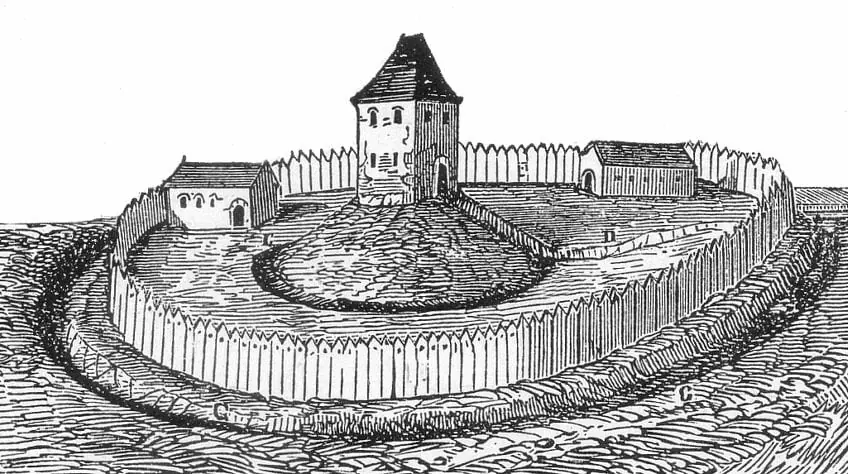 Motte, the ideal image of a tower hill castle from the Middle Ages (1870) by Arcisse de Caumont; Arcisse de Caumont (1801-1873), Public domain, via Wikimedia Commons
Motte, the ideal image of a tower hill castle from the Middle Ages (1870) by Arcisse de Caumont; Arcisse de Caumont (1801-1873), Public domain, via Wikimedia Commons
Alternatively, the elevated position and lower position could share a single circular wall, or concentric walls surrounding both structures. It is quite literally a “castle on the hill” design, which ensured that the primary fort is protected by the elevated position, while the lower encampment provided an immediate response to threats. These castles were essentially mounds, usually with wooden frames that became known as the “Motte”. The encampment and surrounding barrier were known as the “Bailey”, and they became extremely popular due to how easy they were to make and how difficult they were to attack. Eventually, these would develop into “Keeps” with the addition of stone walls around the exterior instead of wooden fencing.
High Middle Ages Castles (11th to 13th Century)
These types of castles were a sort of natural evolution to the Motte and Bailey castles that had been popularized years before. They were a way for a person of prominence to display their wealth all while providing a defensible position to fall back to in the event of a siege. These castles were built almost entirely of stone and featured barrier walls, as well as integrated towers and keeps. Due to these being made of stone they took considerably longer to erect and were far more expensive due to the materials and manpower involved in their construction.
However, they were far more difficult to conquer due to the nature of the materials used in their construction, allowing hardcover from enemy combatants and ranged weapons such as arrows and harpoons.
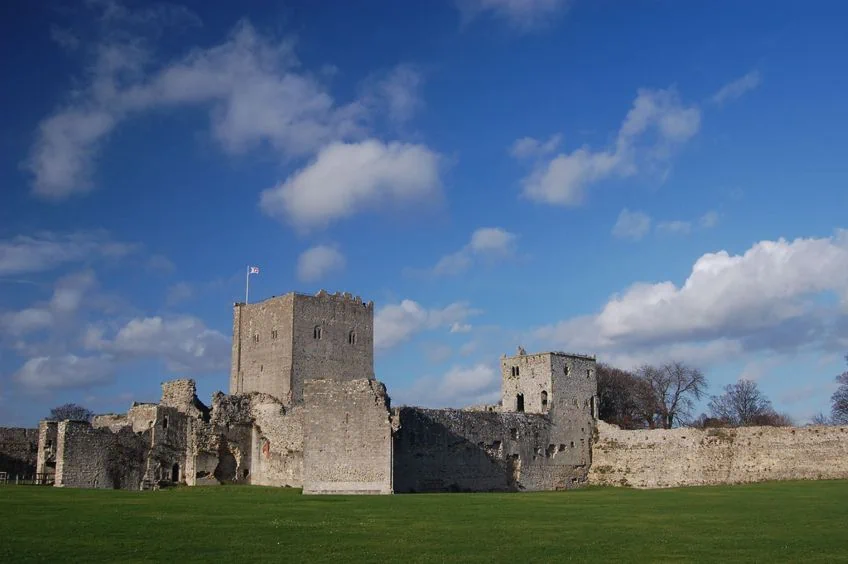 Portchester Castle (11th Century); Matthew Folley from UK, CC BY 2.0, via Wikimedia Commons
Portchester Castle (11th Century); Matthew Folley from UK, CC BY 2.0, via Wikimedia Commons
As you can tell, these were fortified castles designed to withstand a prolonged siege. The primary keep was often the strongest structure of the castle and was protected by things like machicolations, draw bridges, moats, trap holes, and many other nasty elements that discouraged entry or occupation of the castle grounds. These castles were not as widespread as the Motte and Bailey designs due to the fact that they took considerably longer to build. The transportation of the raw materials, the shaping of the stone, and the construction itself took years, as opposed to the mere days to construct a Motte and Bailey design. However, this design required less maintenance and was far more imposing compared to the aforementioned.
Late Middle Ages Castles (14th to 15th Centuries)
When one mentions the term “gothic”, it is often associated with dreary, scary imagery that one might see in an old horror movie. However, gothic architecture was actually quite lively and meant to contrast the dreary, sullen mood that the early medieval castle’s structure had come to be known for. As a result, the medieval castle’s structure became extremely popular. These castles were meant to be aesthetically pleasing on the exterior and nicer to live in on the interior. This would be the result of better planning in the use of different materials, lavatories, dedicated spaces, and, of course, the strong vertical lines that became synonymous with the architectural style of the time.
There are other aesthetic elements of gothic architecture that became very popular in the castle designs of the time.
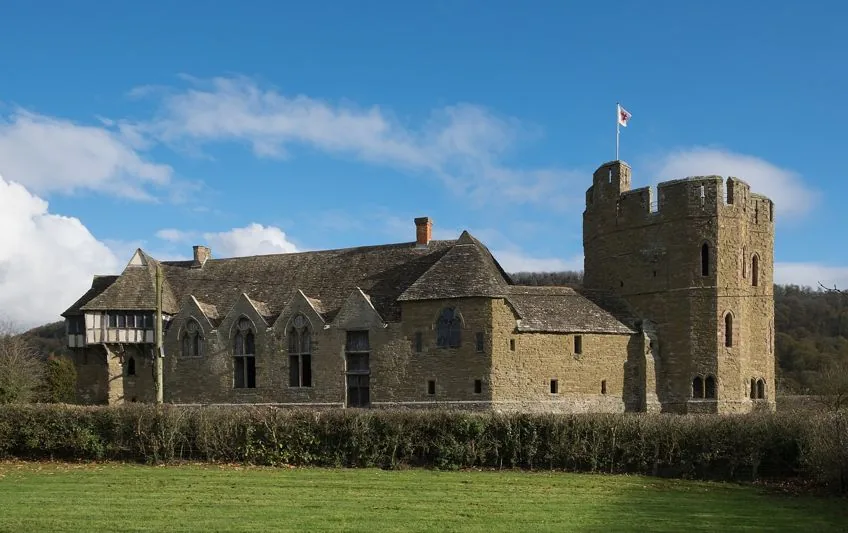 Stokesay Castle (1285–1294); DeFacto, CC BY-SA 4.0, via Wikimedia Commons
Stokesay Castle (1285–1294); DeFacto, CC BY-SA 4.0, via Wikimedia Commons
This included higher rooms with larger, intricate window designs. Archways and bricklaying also took on a stylized look in parts of a castle wall, emphasizing both design and function in a way that had never before been done. Despite the pleasant and uplifting nature, this design brought to the architectural field at the time, due to the effects of Gothic literature in the 1700s, people began to associate this style with dark, and often depressing narratives. That being said, this style of castle architecture is widely celebrated and studied today. Structurally, these castles were also improved. Earlier designs had an “Achilles heel” in their design that allowed attacks to target the foundation of the castle by burrowing underneath the corner walls and destroying the foundation.
This led to the implementation of broader, concentric walls, essentially leading to a design that can be described as a castle within a castle.
Modern Castles (16th to 19th Centuries)
While castles may have initially been built as a means of protection, as weaponry and diplomacy developed, the need for these strongholds dwindled significantly. Additionally, the advent of gunpowder which allowed for the use of cannons and other incendiary weapons made castles a bit obsolete in terms of a long-term defensible position.
What happened to the illustrious castles that were built and renovated for hundreds of years then? Well, for the most part, they were simply upgraded to be even more liveable by modern standards. These were often restored or marked as historical landmarks, sometimes even being dubbed world heritage sites!
This didn’t stop the construction of new castles though. The exceedingly wealthy still built lavish castle-like structures that resembled palaces. These were used as primary or secondary homes by those who could afford the maintenance needed for these illustrious estates. This relegated castles to being nothing more than a show of wealth, a far cry from their original application. A good example of this trend is when King Ludwig of Bavaria went on what is, essentially, a castle-building spree. These were modernized versions of gothic designs, which were massive in both size and height.
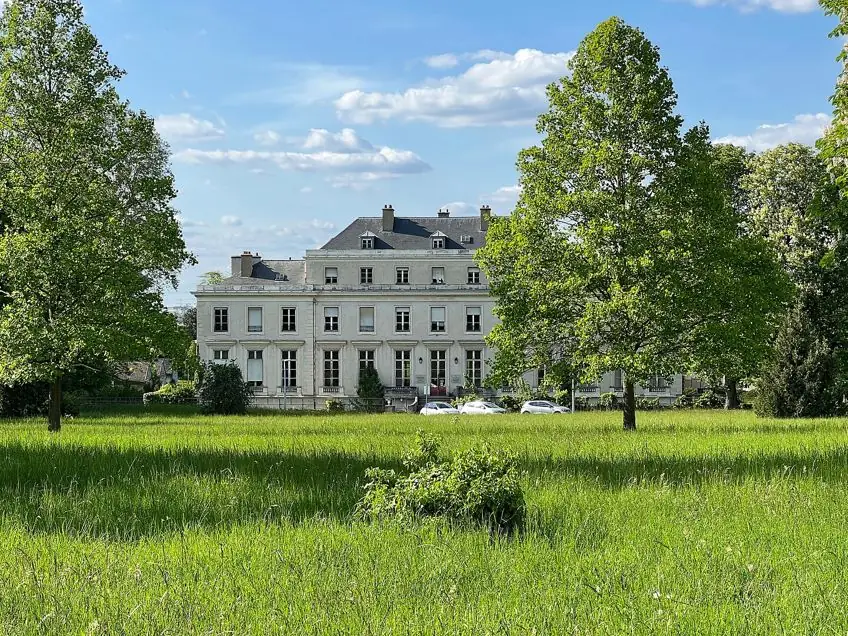 Castle of Brévannes (1786); Chabe01, CC BY-SA 4.0, via Wikimedia Commons
Castle of Brévannes (1786); Chabe01, CC BY-SA 4.0, via Wikimedia Commons
It is speculated that he sought to associate himself with the nobility and royalty of old while commemorating all the castles of old. That being said, modern “castles” are still quite awe-inspiring and tend to conjure imagery of times past in one’s imagination. However, just like there were when they were first conceived, castles and palaces are largely unobtainable by those without immense inherited wealth. This makes them something of a novelty to the average person, further immortalizing them in the hearts and minds of millions all over the world.
What Are the Characteristics of Castle Architecture?
While there are many eras of castles to choose from, after the early ages of castle creation the design remains relatively the same. Regardless of the castle type, there are a few characteristics that most castles share, which ensure the structure is not only secure but can be defended from multiple points of approach. That being said, here are a few common castle architecture terms for you to keep in mind should you ever find yourself in or around one.
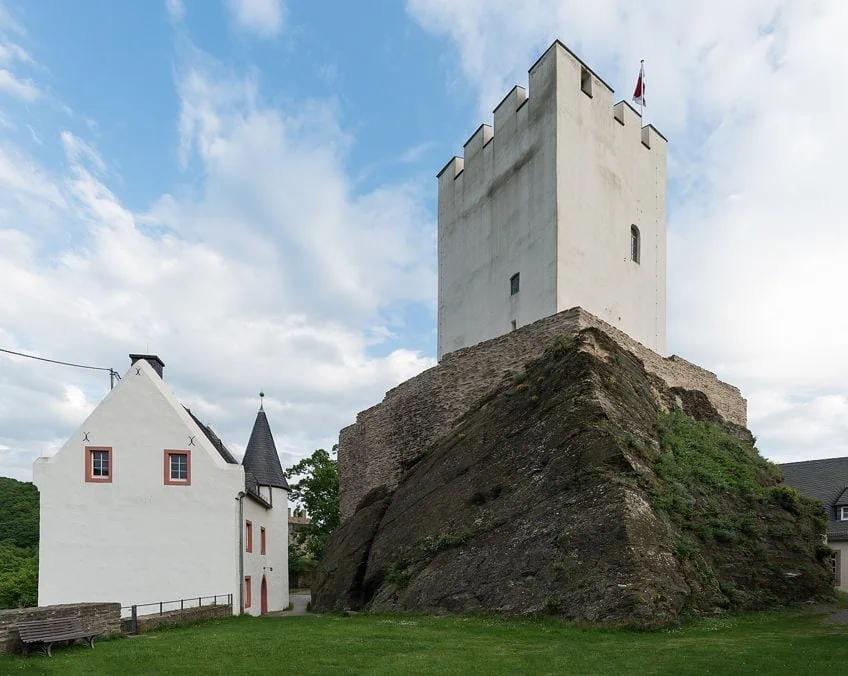 Keep and women’s house, Sterrenberg Castle (1190); DXR, CC BY-SA 4.0, via Wikimedia Commons
Keep and women’s house, Sterrenberg Castle (1190); DXR, CC BY-SA 4.0, via Wikimedia Commons
The Keep
As far as castle architecture terms go, “keep” is one that you will hear frequently when this topic is discussed. The keep is the main structure or tower around which the rest of the castle has been built.
This structure is often reinforced and highly fortified compared to the rest of the castle grounds, and is often therefore the focal point of a castle’s composition.
The Yard
The yard is essentially the area around the main keep. This area is often open until the first boundary wall of the settlement is reached. The yard of a modern castle/palace is purely decorative, whereas back in the day it would have been used to position counteroffensive measures such as trebuchets, reinforcements, ramming instruments, and various other means of defense.
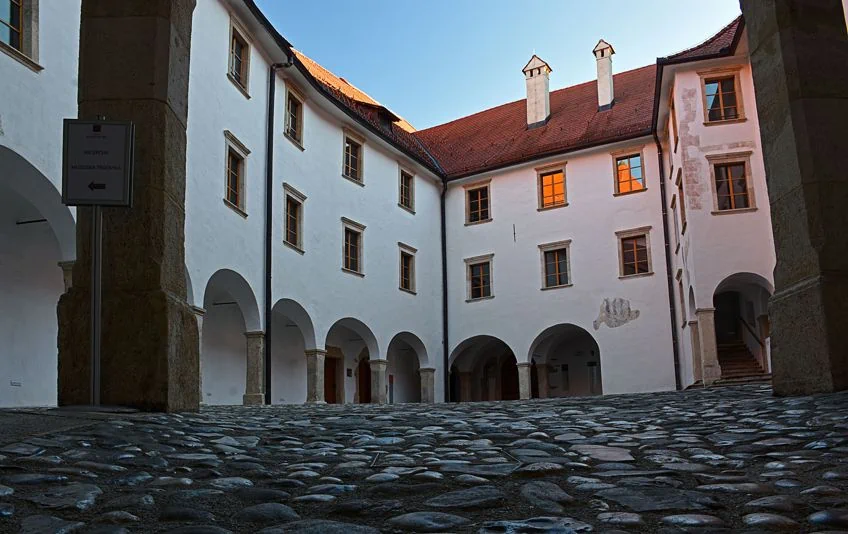 Rajhenburg castle yard (1147); Vid Pogacnik, CC BY-SA 4.0, via Wikimedia Commons
Rajhenburg castle yard (1147); Vid Pogacnik, CC BY-SA 4.0, via Wikimedia Commons
The Towers
Towers of a castle were positioned at the four corners and other parts of a castle wall surrounded the keep and yard. The towers were essential to a castle’s defense as they allowed the occupants to identify and prepare for threats from a distance.
They could also be used to position archers and other types of ranged weaponry thanks to their height.
The Moat
The moat of a castle was, as the name suggests, a moat surrounding the perimeter of the castle structure. A moat prevented covert attacks from enemies while allowing the occupants some breathing room from an assault during a siege scenario. Moats were often deep and contained nasty surprises such as traps, constricting reeds, or eels.
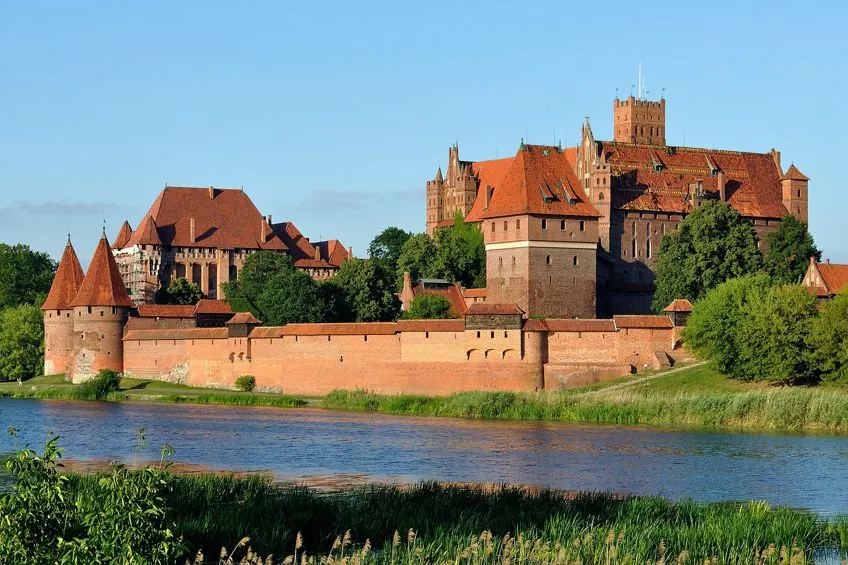 Malbork Castle (13th Century); DerHexer; derivate work: Carschten, CC BY-SA 3.0, via Wikimedia Commons
Malbork Castle (13th Century); DerHexer; derivate work: Carschten, CC BY-SA 3.0, via Wikimedia Commons
The Drawbridge and Barbican
The drawbridge and barbican are one of the most iconic features of any castle. The drawbridge allowed for control of traffic in and out of the castle grounds while the barbican allowed for s sort of choke point during a siege.
Both of these were heavily targeted and subsequently defended in the event of a siege.
The Postern Gate
The postern gate of a castle essentially functioned as a little back door. This gate allowed the occupants to flank the enemy if their attack was focused on the front of the structure. Alternatively, the gate would have been used as a fallback and retreat point should the castle ever be breached and overrun by the enemy.
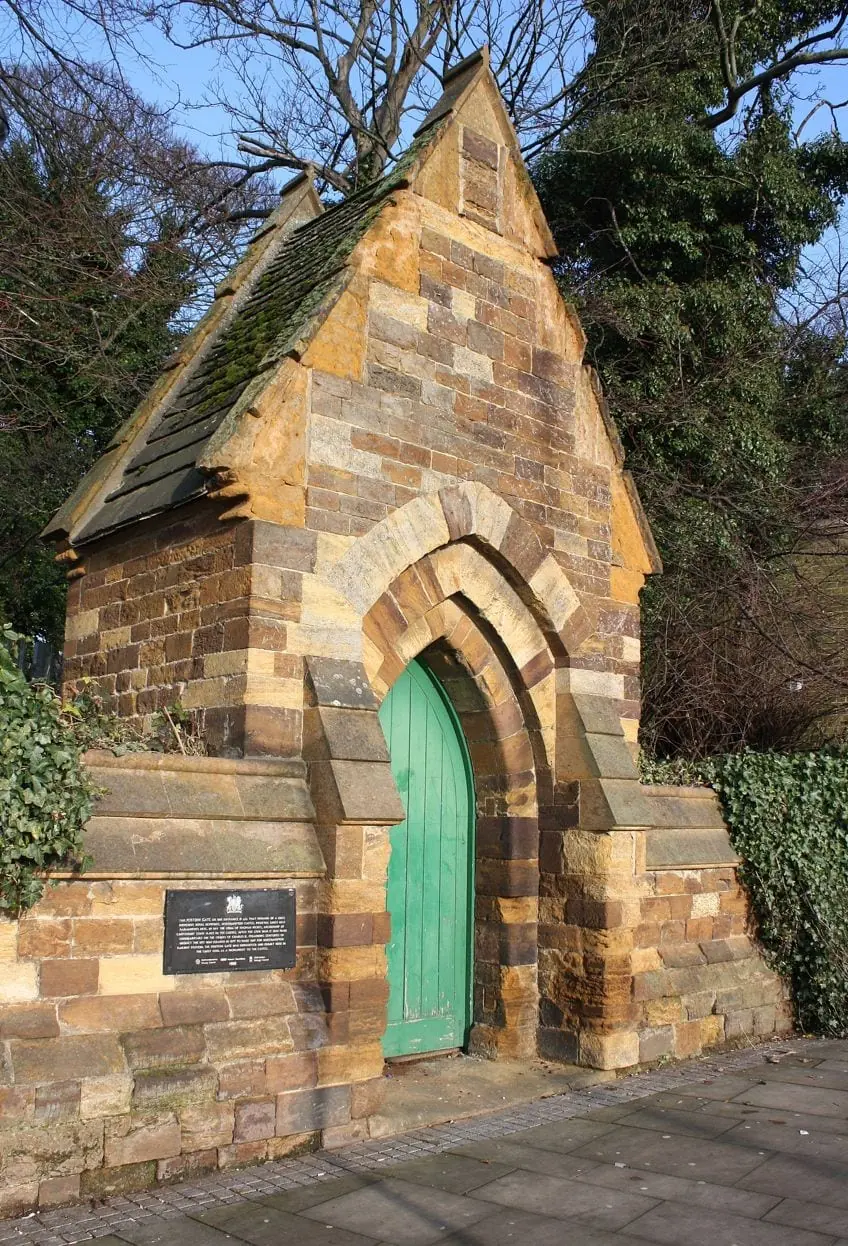 The postern gate remains of Northampton Castle (1084); Cj1340, CC BY-SA 3.0, via Wikimedia Commons
The postern gate remains of Northampton Castle (1084); Cj1340, CC BY-SA 3.0, via Wikimedia Commons
Now that you know what a castle is, what they were used for, what they looked like throughout history, how the design of the castle evolved over the years, and what purpose they serve today, it’s time for you to get out there and put your newfound knowledge to the test. Castles have always been a historical and cultural cornerstone throughout the world, so if you ever have the opportunity to see one, we highly recommend you check it out!
Frequently Asked Questions
What Is a Castle?
We’ve all seen them, we know their shape, we know their size, but what is a castle? A castle is essentially a large, fortified building consisting of a keep, towers, a moat, and large walls that served as a fort in times of war during the medieval period.
Why Is It Called a Castle?
The word castle, like plenty of other English words, is derived from Latin. The original word is castel which quite literally means fort or defensible position in Latin. However, the word’s meaning is meant to describe a structure that is both a dwelling and a stronghold.
What Is the Owner of a Castle Called?
While you might think that owning a castle simply means that you own a large building, there are other perks that come with it. For example, if you were to purchase a historic castle today, you might be eligible for the title of Lord, Knight, Lady, or even King!

I am deeply passionate about history and am constantly fascinated by the rich and complex stories of the past. As the editor-in-chief of learning-history.com, I have the opportunity to share this passion with a wide audience through the creation and distribution of engaging and informative content about historical events, persons, and cultures. Whether it’s through writing articles and blog posts or creating videos or podcasts, I strive to bring the past to life in a way that is both accurate and enjoyable. My expertise in history, combined with my strong writing and communication skills, allows me to effectively communicate complex historical concepts and make them accessible and interesting to a wide range of readers. I am truly grateful for the opportunity to share my love of history with others through my work on learning-history.com.

